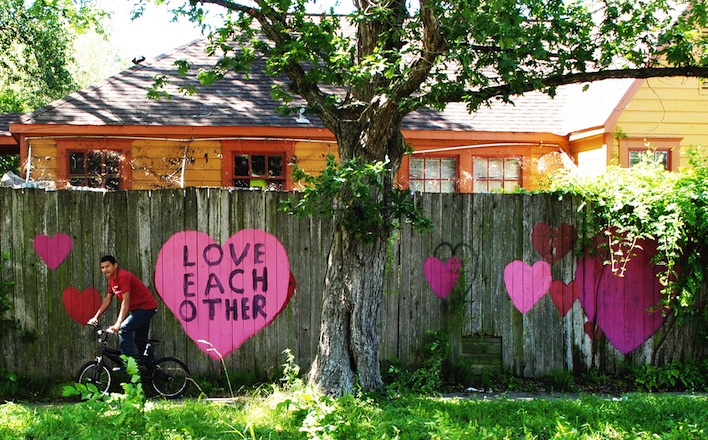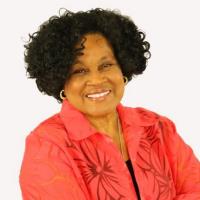Commentary on Ruth 1:1-18
People are often surprised to find that the words from Ruth 1:16b-17, often heard at weddings, are not about the joys of beginning a new life together.
Instead these words are an affirmation of Ruth’s commitment to her mother-in-law, Naomi, after a series of losses devastated their family. In other words, the context of these words is not the “best of times,” but the “worst of times.”
Famine sets the stage for difficulties encountered even before the story begins. In the opening scene, Elimelech, his wife Naomi, and their sons, Mahlon and Chilion, leave their Bethlehem home in search of food in Moab. This is an ironic unexpected reversal of fortune since Bethlehem means “house of bread.”
In contemporary language, Elimelech and his family were immigrants and/or refugees in a land not their own. Theirs would not have been an easy lot. Somehow they made it through. Before long, perhaps unexpectedly, Elimelech died, leaving Naomi and her two sons to make it on their own. Eventually, Mahlon and Chillion married local women, Orpah and Ruth. The family seems to have adjusted to their “new normal.” Then Mahlon and Chillion died. The losses were devastating.
For Naomi, it meant not only grieving the death of her husband, but also not once but twice, feeling the interminable loss of her sons. No parent expects to bury their children. Perhaps, an unanswerable “Why God, why?” question lingered in her soul compounding her bitterness.
Grief seems to have strengthened what were already strong connections between these women, left alone together who must find a way to meet their needs. Why else would there be such weeping when they realized that the three would become two and one? One can almost hear the three women weeping as they come to realize the new reality will separate them.
The news that there was bread in Judah must have been music to Naomi’s ears. She decides to go home, taking her daughters-in-law with her. Having started the journey together, it must have seemed odd to Orpah and Ruth that Naomi attempts to persuade them to return to home. Having experienced what it means to be an outsider/refugee/immigrant in Moab, perhaps Naomi wants to spare Orpah and Ruth a similar experience in Judah where they would be “too distant from her own kin to receive care and sustenance.”1
Wilda Gafney suggests that “Since the younger women are clearly not pregnant, they are of no use to Naomi, who tries to get rid of them.”2 Persuaded, Orpah decides to return to Moab. Ruth was undeterred. She would stay with Naomi and create a new life for herself in Judah. Her affirmation to live, die, and worship in Naomi’s homeland affirms her commitment.
At first glance this seems to be quaint little biblical story in which the main characters (Ruth, Naomi, Boaz) to do everything right. A look at the dynamics that lie behind the story reflect another dimension, making the friendship between Ruth and Naomi even more remarkable.
First, although not mentioned, there was much strife between Moab and Judah. Moreover, reference to Moab is a reminder that Moabites (and Ammonites) are part of Abraham’s extended family descended from the incestuous union of Lot and his daughters. Israel’s disdain for these extended family members can be seen in Deuteronomy 23:3 where Ammonites and Moabites were excluded from the assembly for ten generations. This religious and cultural norm did not deter their friendship.
Second, the placement of the book of Ruth immediately following the book of Judges, a book that ends with the night long gang rape of one woman and the communal abduction and rape of six hundred women, might provide the reader a welcome relief. A close read might make that relief short-lived, however.
Gafney explains, “The taking of the women in Ruth 1:4 is done with the same verb that describes the abduction and rape of the young girls in Shiloh in Judges 21:23”3 and “is a particular problem for English readers because it masks sexual and domestic violence.”4 Despite these circumstances, these two women found enough healing to forge a genuine friendship.
Third, “Ruth is multiply-marginalized, socially and sexually vulnerable.”5 Naomi is a menopausal woman thought useless for her child-bearing years are long past. For these two women, social location simply was not an issue.
Given that the book ends with a reference to Ruth as the great-grandmother of David, this is precisely the writer’s point. Despite cultural and religious norms to the contrary, Naomi and Ruth embraced each other. They made room for one another in their hearts. Neither lost their identity in the relationship. Naomi was an Ephrathite, Ruth was a Moabite. Although Ruth adopted Naomi’s faith, prior to her coming to Judah, she worshipped the gods of her people. Even that did not stop their friendship. Ruth and Naomi … Naomi and Ruth … theirs is a message the world needs to hear.
Notes:
1 Jack Sasson, “Ruth,” in The Literary Guide to the Bible (Cambridge, MA: The Belknap Press of Harvard University Press, 1987), 323.
2 Wilda C. Gafney, “Ruth,” in The Peoples’ Bible Companion, ed. Curtiss Paul DeYoung et al (Minneapolis: Fortress Press, 2010), 127.
4 Gafney, “Ruth,” in The Africana Bible: Reading Israel’s Scriptures from Africa and the African Diaspora, ed. Hugh R. page, Jr. et al (Minneapolis: Fortress Press, 2010), 250.


November 1, 2015